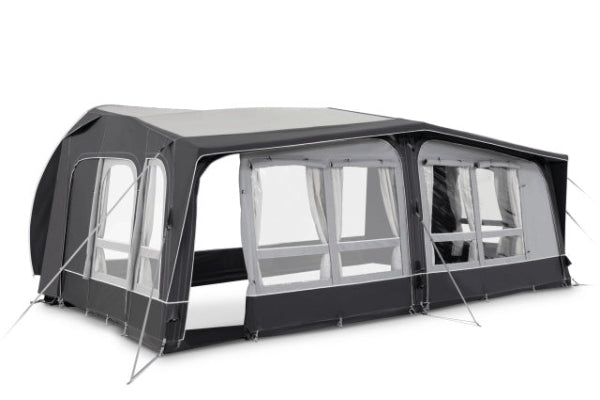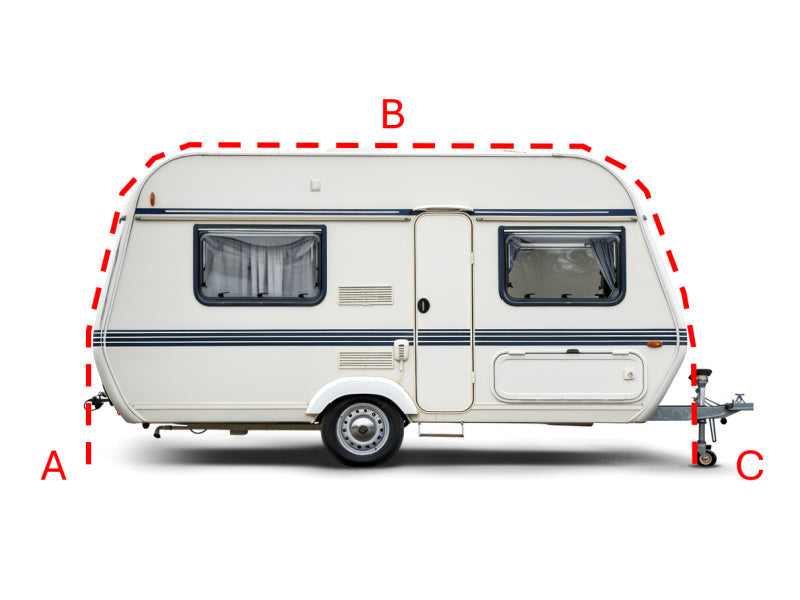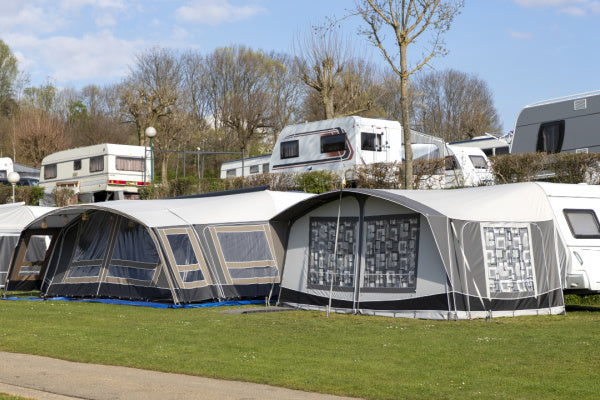How Do I Stop My Caravan Awning From Sagging?
Nobody wants their awning to resemble a deflated balloon. That droopy fabric not only looks unsightly but can lead to damage and water pooling. The good news? Preventing caravan awning sag is straightforward with the right knowledge and maintenance routine. Keep reading to discover expert tips for maintaining a perfectly taut awning and stress-free camping adventures.
Preventing Awning Sag
A sagging awning often starts with subtle signs - slight ripples in the fabric or minor dips along the edges. These small issues can quickly escalate into significant problems during adverse weather conditions.

Storm damage and structural weakness often begin with minor sagging that goes unchecked. Catching these early warning signs makes all the difference between a quick adjustment and costly repairs.
Regular inspection routines should become second nature for any caravan owner. Monthly checks during the camping season help spot potential issues before they develop into major problems.
Proper Tensioning Techniques
Mastering proper tensioning techniques transforms a saggy awning into a robust outdoor shelter. Think of tensioning like tuning a guitar - too loose and it won't perform properly, too tight and something might snap.
The key lies in achieving balanced tension across all points of the awning. This balance prevents stress concentration in any single area while maintaining the optimal shape.
Adjusting Guylines and Pegs
Guylines serve as the awning's anchor points, playing a crucial role in maintaining stability. Strong winds can loosen even properly secured pegs, making regular adjustments essential.
Start by positioning pegs at a 45-degree angle away from the awning. This angle provides maximum resistance against both vertical and horizontal forces.
During wet weather, ground conditions change dramatically. Soft soil can cause pegs to shift, requiring immediate readjustment to prevent sagging.
Check guyline tension after rainfall or strong winds. A quick daily inspection prevents minor issues from escalating into major problems.
Using Adjustable Legs
Adjustable legs act as the foundation of a stable awning setup. These versatile components allow fine-tuning of tension across the entire structure.
Begin the setup process by extending all legs to an equal height. This creates a level base for further adjustments.

Check each locking mechanism thoroughly before applying tension. Loose mechanisms lead to unexpected shifts in height and compromised stability.
Regular cleaning and lubrication of adjustment mechanisms prevent seized joints and ensure smooth operation. Sand and salt air can accelerate wear on these components.
Utilising Awning Rafters
Support rafters distribute tension evenly across the awning's width. These crucial components prevent the dreaded middle-sag that often plagues poorly supported awnings.
Install rafters at manufacturer-recommended intervals, typically every 2-3 meters. This spacing provides optimal support without adding unnecessary weight.
Storm rafters offer additional support during challenging weather conditions. These reinforcements prove invaluable when facing strong winds or heavy rain.
Maintaining Awning Fabric
Fabric maintenance directly impacts an awning's resistance to sagging. Regular care extends the material's lifespan and maintains its structural integrity.
Weather exposure gradually weakens awning fabric. UV rays, rain, and temperature fluctuations all contribute to material degradation over time.
Cleaning and Drying Properly
Dirt accumulation adds weight and promotes fabric deterioration. Regular cleaning removes this excess burden and helps maintain the material's water-resistant properties.
Use gentle cleaning solutions specifically designed for awning fabric. Harsh chemicals can strip protective coatings and weaken the material.
Allow thorough drying before storage or travel. Moisture trapped in folded fabric leads to mould growth and material weakness.
Brush away loose dirt and debris regularly. This simple habit prevents particle build-up from abrading the fabric surface.
Checking for Tears and Holes
Small tears quickly expand under tension. Regular inspection helps catch these issues early, preventing larger structural problems.
Focus particular attention on stress points and seams. These areas typically show the first signs of wear and tear.
Keep appropriate repair materials readily available. Quick repairs prevent minor damage from spreading and compromising the entire awning.

Choosing the Right Awning Size
Selecting an appropriately sized awning prevents many common sagging issues. An oversized awning creates excess material that's prone to sagging and wind damage.
Consider the caravan's dimensions carefully when selecting an awning. Factor in both length and height to ensure a proper fit.
Think about typical usage patterns and camping conditions. Different environments may require specific features or size considerations.
Weather conditions in preferred camping locations should influence size selection. High-wind areas might benefit from a smaller, more manageable awning size.
The perfect awning balances coverage needs with practical considerations. Too large creates unnecessary complications, while too small limits functionality.
Regular maintenance checks combined with proper installation techniques ensure long-term awning performance. This proactive approach saves both time and money while providing reliable shelter for outdoor adventures.
Appropriate size selection, regular maintenance, and proper tensioning techniques work together to prevent sagging issues. These fundamental aspects of awning care create a reliable outdoor living space for years of camping enjoyment.
Remember that prevention surpasses cure in awning maintenance. Small adjustments and regular checks prevent major issues from developing, ensuring countless comfortable camping experiences ahead.
Other content you might like:
- How to extend a caravan awning
- Should caravan awning legs be up or down?
- Can you put a caravan awning up in the rain?
- Do mud flaps go in or out of awning?
- How do I stop my awning from blowing away?
- Can caravan awnings cause problems?
- Can caravan awnings cause damp problems?
- Can caravan awnings affect windows?
- Can caravan awnings affect the environment?
- Can caravan awnings be recycled?





Leave a comment